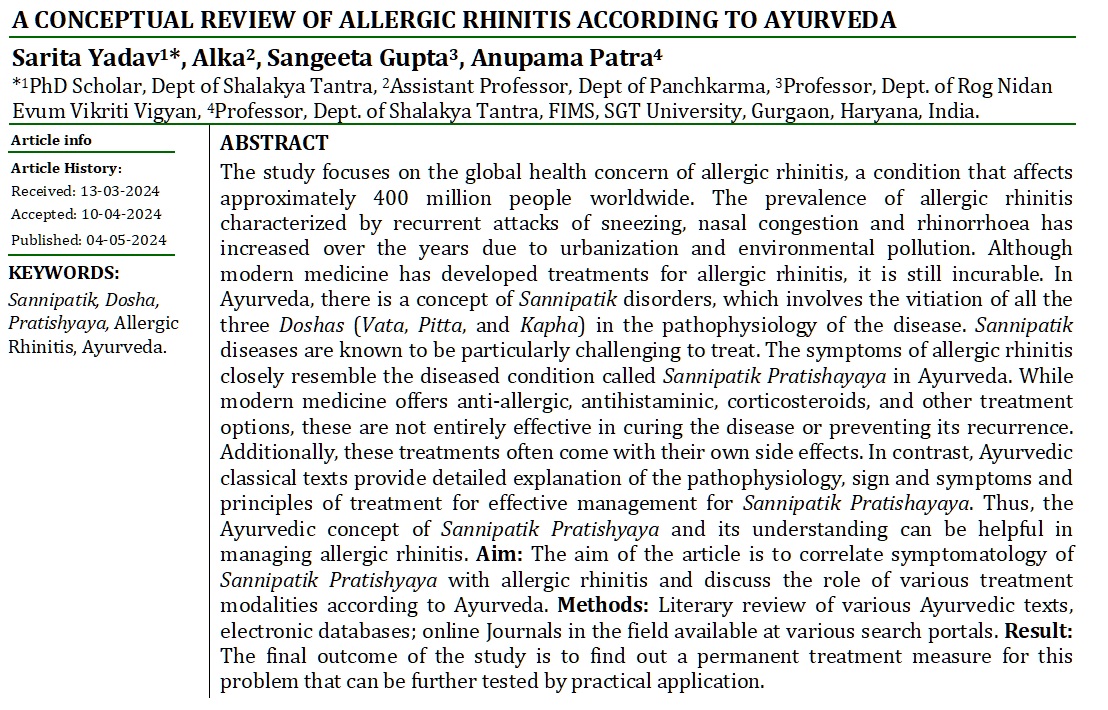A Conceptual Review of Allergic Rhinitis According to Ayurveda
Abstract
The study focuses on the global health concern of allergic rhinitis, a condition that affects approximately 400 million people worldwide. The prevalence of allergic rhinitis characterized by recurrent attacks of sneezing, nasal congestion and rhinorrhoea has increased over the years due to urbanization and environmental pollution. Although modern medicine has developed treatments for allergic rhinitis, it is still incurable. In Ayurveda, there is a concept of Sannipatik disorders, which involves the vitiation of all the three Doshas (Vata, Pitta, and Kapha) in the pathophysiology of the disease. Sannipatik diseases are known to be particularly challenging to treat. The symptoms of allergic rhinitis closely resemble the diseased condition called Sannipatik Pratishayaya in Ayurveda. While modern medicine offers anti-allergic, antihistaminic, corticosteroids, and other treatment options, these are not entirely effective in curing the disease or preventing its recurrence. Additionally, these treatments often come with their own side effects. In contrast, Ayurvedic classical texts provide detailed explanation of the pathophysiology, sign and symptoms and principles of treatment for effective management for Sannipatik Pratishayaya. Thus, the Ayurvedic concept of Sannipatik Pratishyaya and its understanding can be helpful in managing allergic rhinitis. Aim- The aim of the article is to correlate symptomatology of Sannipatik Pratishyaya with allergic rhinitis and discuss the role of various treatment modalities according to Ayurveda. Methods- Literary review of various Ayurvedic texts, electronic databases; online Journals in the field available at various search portals. Result-The final outcome of the study is to find out a permanent treatment measure for this problem that can be further tested by practical application.
Downloads

Copyright (c) 2024 International Journal of Ayurveda and Pharma Research

This work is licensed under a Creative Commons Attribution-NonCommercial-ShareAlike 4.0 International License.






